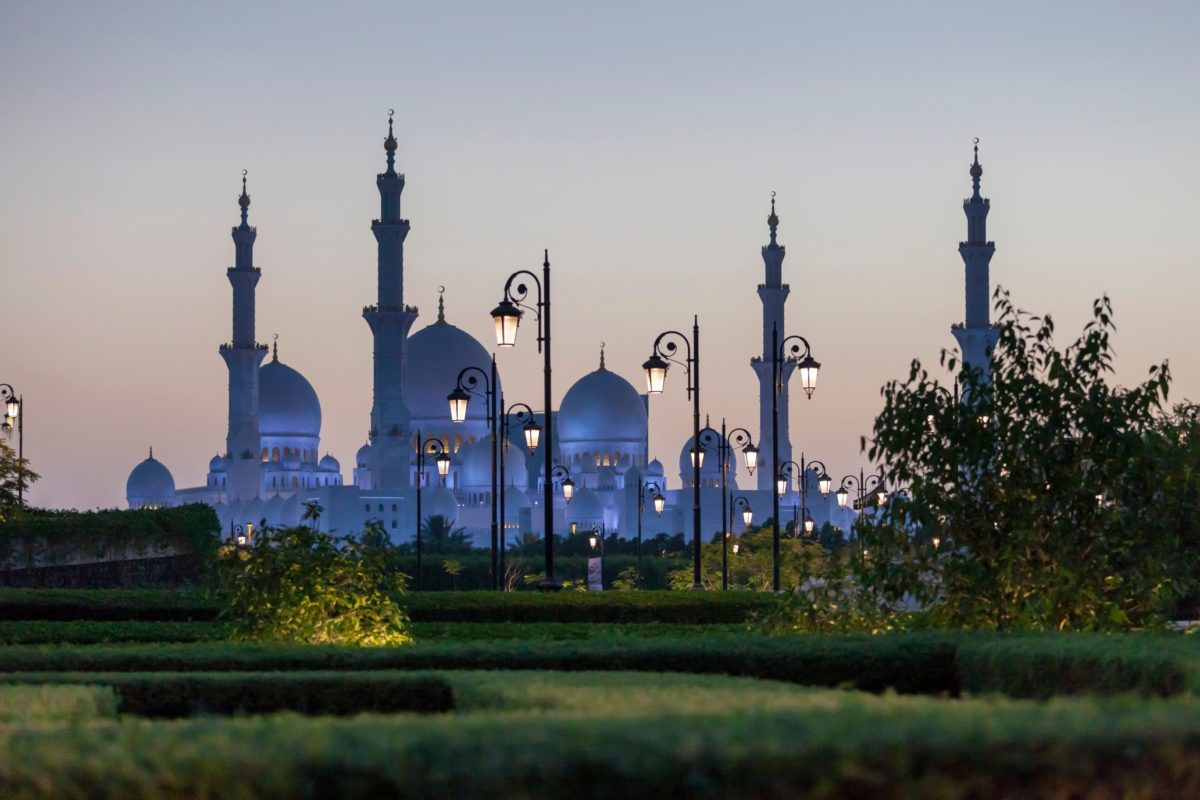The vibrant annual Orchid Show at New York’s Botanical Garden, now in its 15th year, is one of the many harbingers of spring in the city. This year’s theme is Thailand, and the exhibition doesn’t disappoint: it’s a riot of color, with rare and extraordinary specimens on display in an extensive greenhouse tour through the various climates in which orchids can thrive.
Before we begin, a few fun facts. Experts report that orchids have been around for at least 80 million years, based on evidence from pollen stuck to the backs of bees found in amber.
What are their key characteristics? Depends on who you ask. Botanists would describe orchids as perennials that lack a permanent woody structure, having flowers with bilateral symmetry and generally featuring one petal (the labellum) that is different than the other two. They’re popular in the lab because they take well to genetic experimentation: Charles Darwin wrote extensively on orchid cross-pollination.
Perfumers would say they’re essential to their trade. Orchid scents vary from beguiling floral scents to odors like dung and rotten meat (their fragrance has evolved to attract the pollinator needed – bees and butterflies like sweet scents, but flies like the odiferous ones). Find the right orchid, and the resulting fragrance will be a hit. Black Orchid was Tom Ford’s first fragrance, and 10 years later the bestseller has spawned a family of scents, including Velvet Orchid and Orchid Soleil.
Wedding planners would add that orchids are in the top 10 favorite flowers globally (according to The Knot); along with poinsettias, they’re the most popular houseplants in the world. Surprisingly, orchids are viewed most favorably as Valentine’s Day flowers by millennials (although they’re a distant second to roses, according to Statista).
Symbolically, in Chinese culture orchids are one of the “Four Gentlemen,” a group that also includes bamboo, plum trees and chrysanthemums – each represents one of the four seasons. Orchids, in this case, represent spring. To the ancient Greeks, orchids suggested virility. They have been believed to have various healing and protective properties; the Aztecs were said to drink a mixture of the vanilla orchid and chocolate to give them power and strength, and the Chinese believe orchids can help cure lung illnesses and coughs.
For natural beauty, the loveliness and elegance of orchids is hard to surpass. Small wonder that they’ve inspired passionate and sometimes bad behavior – if you’re in any doubt about that, just re-read The Orchid Thief, Susan Orlean’s 1998 account of her investigation of the arrest of John Laroche and a group of Seminoles in south Florida for poaching rare orchids (including the Ghost Orchid) in the Fakahatchee Strand State Preserve. The plot of the subsequent film loosely based on her work – the 2002 Spike Jonz film Adaptation (in which Meryl Streep plays Orlean) – is largely driven by the difficulties of capturing on film the nuances of these flowers and their effect on people. Fictional detective Nero Wolfe was an orchidophile – in real life, “orchidelirium” was the name for the ailment suffered by wealthy orchid fanatics in the Victorian era, who sent explorers and collectors to almost every part of the world in search of new varieties. These expensive expeditions were often shrouded in secrecy and it was not unusual for collectors to spread misleading information about the locations where new orchids were found (new exotic orchids were most often sold at auction in London at sky-high prices).
Elusive, desirable, gorgeous, complex, delicate and refined, one could argue that these hothouse flowers are the very embodiment of luxury. So you might be surprised to learn that while considered exotic, orchids are actually not all that rare: they’re classified by botanists as members of the Orchidaceae family, one of the two largest families of flowering plants, with almost 28,000 currently accepted species (that’s four times the number of mammal species). They’re the national flower of many countries, including Venezuela, Columbia, and Singapore.
On an icy-cold March day, our new Dandelion Chandelier Staff Photographer Henry Walker joined me for a jaunt to the Garden to see what this year’s show could teach us about botanical luxuriousness and how best to capture it on film (you can see his incredible work in the slide show at the end of this post). Although outdoors the Garden’s grounds were barren, brown and still, the exhibit was filled with a jaunty crowd of hardy souls who were undaunted by the wind chill and determined to see the sights inside the iconic Enid Haupt Conservatory.
Our family has spent many magical days at the New York Botanical Garden – it’s one of the most civilized and lovely spots in greater New York. The opening vignette of this year’s Orchid Show did not disappoint: topiaries of Thai elephants bearing graceful boughs of blooms in vivid pink and yellow surrounded a placid pond; peach and purple orchids nestled into the trunks of towering palm and fruit trees (while some orchids grow on the ground or on rocks, most grow on tree trunks or branches). It was as if we had been transported to a lush Thai jungle, and were at the precipice of a splendid adventure.
Winding through the exhibit takes visitors through many vistas: an allée lined with birds of paradise and crowned by tropical vines, palm fronds and branches; an aerial perch at the top of an iron staircase from which one can view the tropical rain forest from a different perspective; a European-style gallery with a classic Greek fountain amidst a pool of water lilies; and a room filled with desert succulents (including blue agave, used to make tequila) that was like a sculpture exhibit in its intricacy and variety.
After emerging from the desert display, visitors arrive at the mid-point of the exhibit and another stunning vignette: a classic Thai “sala” – a place of relaxation and shade – strewn with orchids: white, pink, yellow, and red. On a cold late-winter day, it’s like stumbling across spring itself. You will undoubtedly find this image on numerous Instagram posts (#OrchidNYBG). In this room there are also “spirit houses,” which are commonly found in Thailand and used as small shrines where people can leave offerings to protective spirits. There’s also a nod to the lovely Thai ceremony of the sky lanterns, in which large paper luminaries are sent into the night sky to release bad luck and summon good fortune. The final room is a celebration of still more orchids, many multi-colored, variegated, speckled or shaggy.
So why Thailand as the theme for this exhibit? The country is home to the one of the richest and most diverse orchid populations in the world, with an estimated 1,200 to 1,300 native species. It also leads the world in tropical orchid production, and has developed distinctive garden styles and unique traditions. In addition to the flora and fauna in the Conservatory, there are many other opportunities to experience Thai culture at the Garden while this exhibit is running. For example, the Somapa Thai Dance Company performs on weekends, demonstrating the broad range of dances from various parts of the country.
Horticulture is hard work, especially when it comes to orchids. If you have your own collection, you can get coaching at the Garden’s Green School about how to successfully select and care for them.
There are refined dining options at the Garden that can make for a lovely beginning or ending of your visit to the Orchid Show. If you reserve far enough in advance, you can have a full meal at the new Hudson Garden Grill, which serves New American cuisine in a bright and airy dining room alongside the Conifer Arboretum. If you’re seeking something more casual, the Pine Tree Café serves inventive sandwiches, pizza, fresh baked goods and wine and beer. The Staff Photographer and I opted for that (the oatmeal raisin cookies are delish, and in honor of the fact that vanilla plants are part of the orchid family, you might want to add vanilla ice cream); afterward, we pronounced it a highly successful outing.
If you prefer starlight to sunlight, you can visit the exhibit at one of the Garden’s Orchid Evenings (but be sure to purchase your tickets in advance). On selected Saturday evenings, for three hours there will be live music, dance and cocktails (this might be a great first date idea!)
We never leave without a quick stop at the charming Shop in the Garden. If you love books about specific plants, or about the great gardens of the world, this is your place. In addition, there are botanical table-top items, archival prints, stationary, hand-made soaps, decorative lanterns, planters, pots and live plants on offer.
Whether you’re a visitor or a native, it’s easy to get to the Garden, and well worth a trip. Metro North trains from Grand Central stop just steps away from the main entrance, and there’s ample parking for those who choose to drive. As the weather warms up, there will more and more things to do and see: tram tours of the grounds, a stroll through the Rock Garden, a tour of the Herbarium, running through the maze at the Children’s Adventure Garden, exploring the Rockefeller Rose Garden, and pausing in Daffodil Valley. Our favorite time is early June, when the peonies are in bloom.
In the meantime, consider ending your Orchid Day in style. First, stop at Tiffany’s on Fifth Avenue and purchase a sterling silver orchid vase for $995. Then hit Bergdorf’s for a bottle of Tom Ford’s 10th-anniversary limited edition Black Orchid Lalique Edition, which comes in a jet-black crystal perfume bottle knotted by gold twine, created exclusively for the brand by French glassmakers (there are only 1,200 available in the world). Finally, pop over to the bar of the Four Seasons Hotel in midtown, settle into a chair at the TY Bar, and order a NY de Fleur. It’s a cocktail made from Ketel One vodka, St. Germain elderflower liqueur, Louis Roederer champagne, and fresh lemon juice, topped by a vivid orchid sealed in ice. Spring in a glass! Toast to an excellent tradition, and make plans to repeat your orchid pilgrimage next year.









